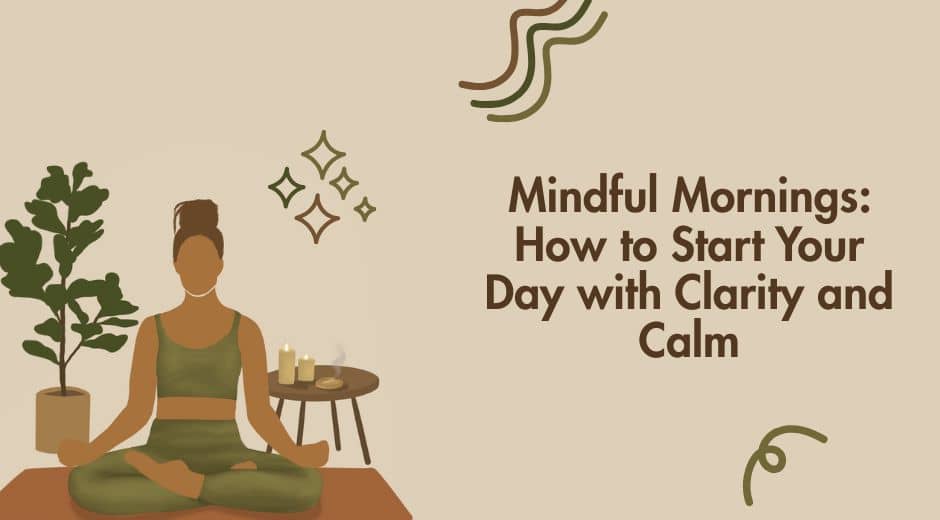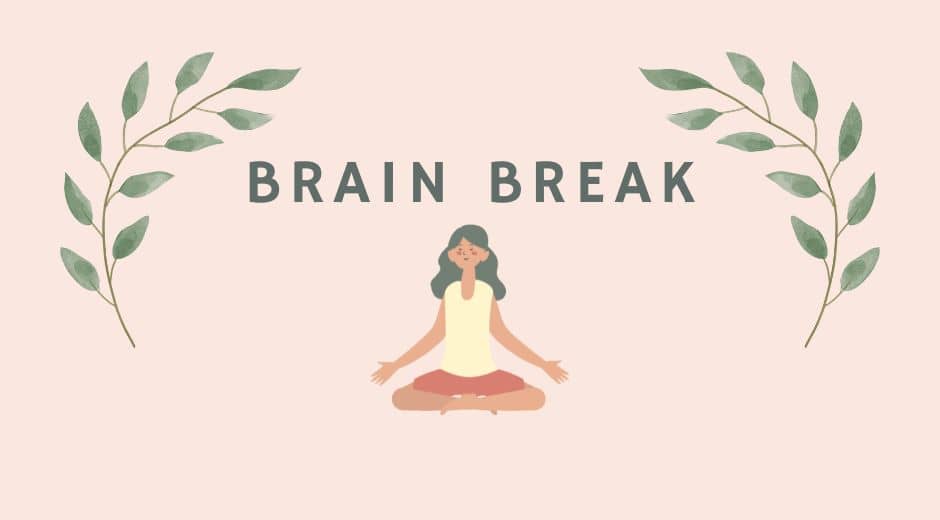Finding Strength in Stillness: The Art of a Calm Mind
Stillness has become a lost art in the modern age. Between constant notifications, rushing schedules, and endless noise, finding a moment of silence feels almost impossible. Yet stillness is one of the most powerful tools for mental and emotional resilience. It is not about doing nothing but about reconnecting with your inner state of awareness.
Stillness brings clarity. It helps you see life as it is, not as you imagine it to be. It invites peace, strengthens focus, and helps you recover from the overstimulation that defines modern living. Through stillness, we rediscover a quieter strength that no amount of chaos can shake.
The Meaning of Stillness
Stillness is not the absence of thought but the space between them. It’s a moment of conscious rest where the mind observes instead of reacts. In stillness, you allow yourself to feel without judgment, to breathe without urgency, and to simply be present.
Many cultures and philosophies, from Zen Buddhism to Stoic reflection, emphasize stillness as essential for wisdom. Even a few minutes of intentional calm can shift how the brain processes stress. Neuroscientists have found that stillness activates the parasympathetic nervous system, slowing the heart rate and lowering cortisol levels.
According to Psychology Today, practicing moments of quiet awareness daily leads to measurable improvements in focus and emotional stability. Stillness is not only spiritual but scientifically supportive of mental wellbeing.
Why Stillness Matters in a Busy World
Constant activity gives the illusion of productivity, but busyness often masks exhaustion. When every minute is filled, there’s no space to think clearly or feel deeply. Stillness gives the mind a chance to organize thoughts, recover from information overload, and regain emotional balance.
Without rest, creativity diminishes and decision-making becomes reactive rather than intuitive. Stillness restores the ability to respond thoughtfully instead of automatically. It acts as a pause button for the nervous system—a space where renewal begins.
At BodyWellnessGroup.com, we often emphasize that mindfulness is not about escaping life but engaging with it consciously. Stillness is where that engagement begins.
Simple Practices to Cultivate Stillness
You don’t need a mountain retreat or hours of silence to experience stillness. It starts with intention and a few small practices repeated consistently.
Morning quiet time – Begin each day without screens. Sit comfortably and focus on your breath for five minutes.
Mindful pauses – Between tasks, take slow breaths and observe your surroundings without analyzing them.
Evening reflection – Spend a few minutes in silence before sleep, allowing your thoughts to settle.
Nature immersion – Take short walks in quiet spaces. Let the sounds of nature replace digital noise.
Digital boundaries – Schedule device-free hours daily to make space for mental rest.
These practices may seem simple, but their impact compounds over time. The more often you choose stillness, the more natural it becomes to return to it when life feels overwhelming.
The Power of Inner Observation
Stillness enhances self-awareness. When the noise fades, you begin to notice your thoughts more clearly—what repeats, what distracts, and what truly matters. Observation creates distance between you and your reactions, allowing emotional balance.
This is the heart of mindfulness: awareness without interference. By sitting in stillness, you gain insight into patterns that often go unnoticed in a busy mind. Over time, this awareness strengthens emotional intelligence and resilience.
Stillness and Emotional Healing
The mind and body heal best in calm environments. When you are still, your body exits survival mode and activates its natural recovery systems. Blood pressure lowers, breathing deepens, and tension releases.
Emotionally, stillness allows processing of unresolved feelings. In silence, grief softens, anxiety eases, and compassion expands. Many people resist stillness because it brings up discomfort, yet facing that discomfort is how transformation begins.
By learning to sit with emotions instead of avoiding them, you cultivate courage and authenticity. Healing unfolds not through resistance but through presence.
How Stillness Enhances Focus and Productivity
Ironically, doing less often leads to achieving more. When your mind is calm, concentration sharpens. A few moments of stillness before work, exercise, or study can significantly improve performance.
Stillness refreshes the brain in the same way sleep does. It clears mental clutter and restores clarity, making creativity flow more freely. That is why many successful leaders, athletes, and artists incorporate silent reflection into their daily routines.
By pausing intentionally, you conserve mental energy and make more conscious choices instead of reacting out of stress or habit.
Creating a Stillness-Friendly Environment
Environment plays a major role in sustaining inner peace. To encourage stillness, design small spaces of calm wherever you live or work.
Declutter your surroundings to remove visual distractions.
Add natural elements like plants or soft lighting for a grounding effect.
Use calming scents such as lavender or sandalwood.
Keep a small journal nearby for quiet reflection.
You can transform even a busy room into a peaceful space through intention and mindful design. When your environment supports calm, stillness becomes a natural part of daily life.
Modern Science Meets Ancient Wisdom
Modern research continues to validate what ancient practices have taught for centuries: silence heals. Regular periods of stillness reduce anxiety, improve sleep, and enhance cognitive performance.
According to a study published in Frontiers in Psychology, individuals who engage in daily silent meditation report improved emotional regulation and reduced feelings of overwhelm. The findings align with centuries-old traditions that consider silence a gateway to wisdom and self-mastery.
Stillness brings balance between body and mind, allowing both to function optimally.
Integrating Stillness into Everyday Life
Stillness is not an escape from action—it’s the foundation for meaningful action. By incorporating it into routines, conversations, and decisions, you create a rhythm that balances energy with rest.
Start by noticing your breath throughout the day. When tension rises, pause for three slow breaths before responding. This simple act re-centers your attention and prevents emotional reactivity.
Gradually, you’ll find that stillness no longer needs to be scheduled—it becomes your natural state, even in chaos.
Living with Inner Strength
Stillness does not remove challenges, but it changes how we face them. It gives you the clarity to act with purpose and the strength to remain calm under pressure.
In a world where noise is constant, stillness becomes an act of courage. It reconnects you with the essence of who you are, beyond labels and demands. Through stillness, you learn that peace is not found outside yourself but cultivated within.
To continue exploring practices that deepen mindfulness and emotional wellness, visit BodyWellnessGroup.com and explore our Mindfulness section for more guides and insights.
For external inspiration on mindfulness and quiet reflection, read the expert insights at Greater Good Science Center, a trusted resource on mental wellbeing and inner balance.
And if you’re ready to take your next step toward a calmer, more centered life, begin here: TripBeyondTravel
Stillness is strength, not silence. It is the quiet power that allows us to move through life with grace, focus, and peace.
Wellness Made Simple

Breathwork Basics You Can Use Anytime To Reset
Breathwork Basics You Can Use Anytime To Reset

Sleep Rhythm, Simple Night Habits For Deeper Rest
Sleep Rhythm, Simple Night Habits For Deeper Rest

The Meaning of Connection: Building a Purposeful and Fulfilling Lifestyle
Explore how genuine connection supports mental wellbeing, emotional health, and deeper purpose, shaping a more meaningful and fulfilling lifestyle.

Hydration Balance: How Water Shapes Energy, Digestion, and Daily Wellness
Learn how hydration balance fuels energy, supports digestion, and improves overall wellbeing through simple daily habits and smart nutrition strategies.

The Power of Grounding: Returning to Inner Stability in a Distracted World
Discover how grounding techniques calm the mind, reduce stress, and restore emotional stability in a fast paced, distraction filled world.

Mastering Mobility: The Overlooked Pillar of Long-Term Fitness Health
Discover why mobility is essential for strength, performance, and injury prevention, and learn how daily movement habits build a healthier, more resilient body.













